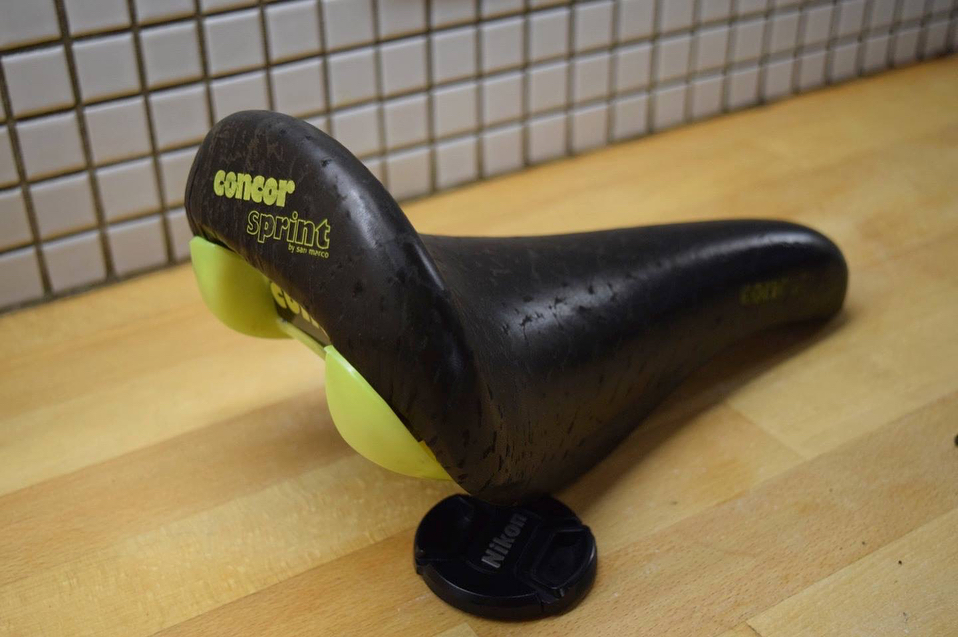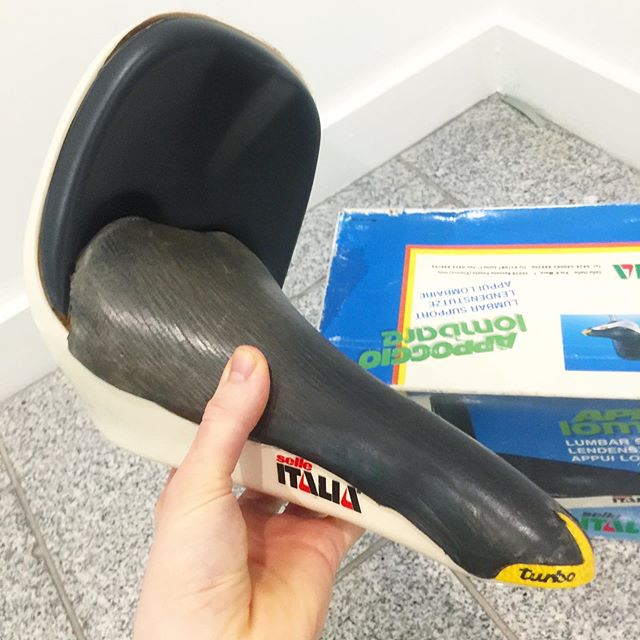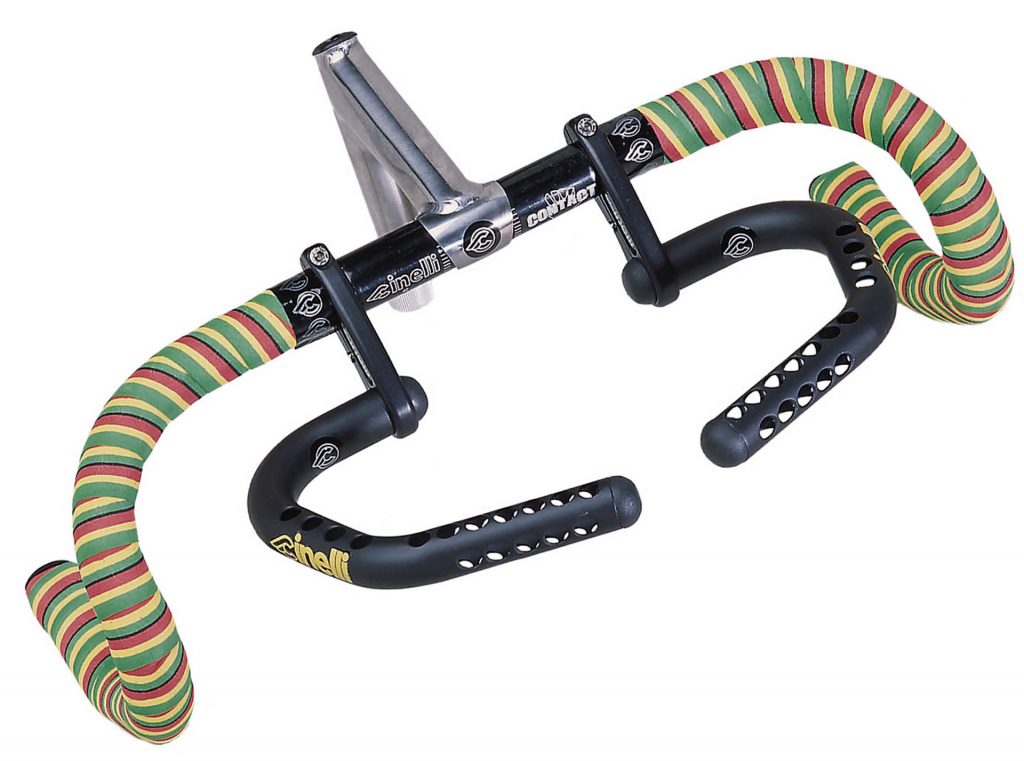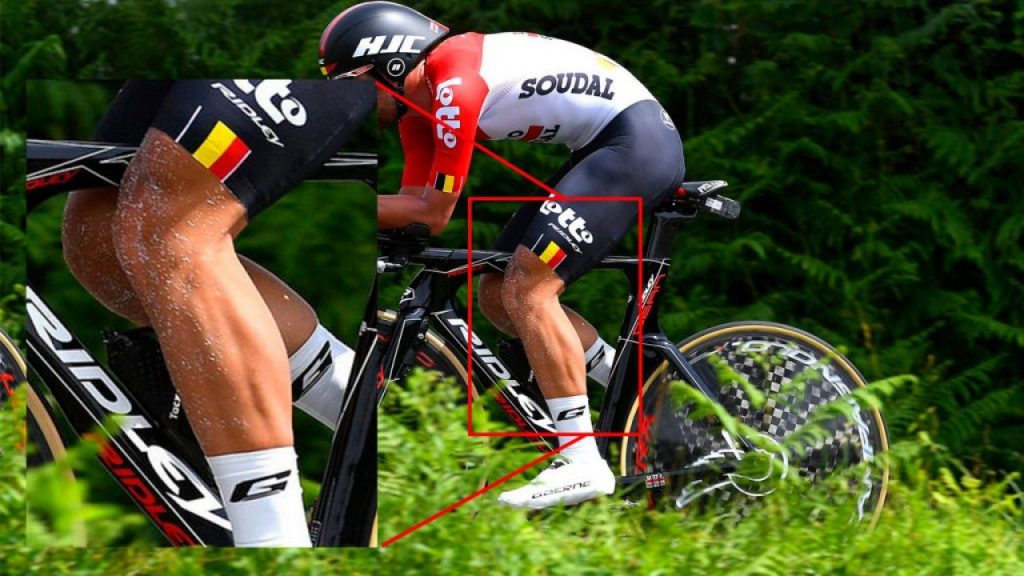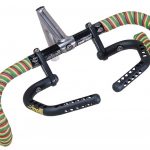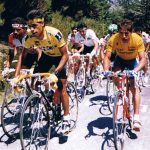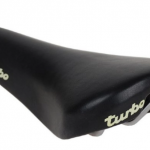The International Cycling Union, better known as the UCI, still has strict rules when it comes to safety. According to many, she also (unconsciously) holds back the progress of the bicycle industry. We are not going to talk about that here, but about 5 things, bicycle accessories that the UCI has banned in recent years.
Spinergy Rev X wheels
Who does not remember Paul Herygers who became world champion cyclocross in 1994 in Koksijde (to the regret of the Dutch fans) on a racing bike with peculiar wheels with only 8 spokes (4 on 1 side) or Mario Cipollini on his Cannondale when he joined the Saeco team. Both then drove with Spinergy Rev X wheels in carbon.
Dit bericht bekijken op Instagram
They were revolutionary for the time and more aerodynamic than the usual wheels at the time. It was then the early days of the development of carbon in the bicycle industry and the carbon fibers were not yet of the quality they are today.
As a result, a Spinergy Rev X wheel could implode at full speed. In addition, the spokes in motion were razor-sharp. There is a story that a rabbit was decapitated in a cyclocross race and that some cyclists suffered serious cuts in a crash.
When Paolo Bettini complained about how he nearly lost a hand in a crash, the UCI decided to ban the Spinergy Rev X wheels for being too dangerous.
The American company Spinergy still exists and still makes Spinergy wheels, but with more spokes.
Tail fin saddles
The first time I saw a strange aerodynamic saddle was in the 1986 Tour de France when French rider Thierry Marie rode a kind of fin behind his saddle during the prologue time trial. This allowed him to lean against the fin and put more power on the pedals.
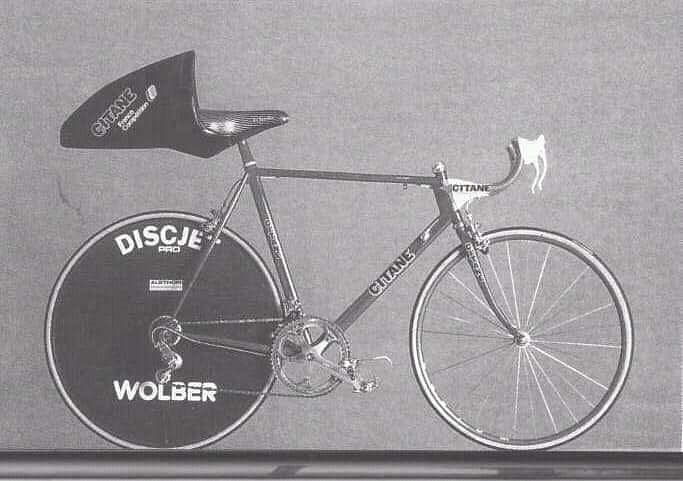
The Gitane bike with the strange saddle with which Thierry Marie won the prologue of the 1986 Tour de France
Another advantage is that there was less turbulence than with a normal saddle.
Thierry Marie immediately won the prologue with 2 seconds ahead of Eric Vanderaerden who then rode for the Panasonic team.
Due to unfair competition, the tail fin saddle was soon banned by the UCI. A few years later, however, this saddle was reflected in prologues and time trials. In those years, the main saddle manufacturers developed their models.
Presumably the saddle was banned again in the early 1990s. Information about this is always welcome.
Cinelli aerobar
In 1995 the Italian brand Cinelli launched the aerobar Spinaci, which immediately was a huge succes. In the 1st year, no less than 20,000 units are sold per month. It doesn't take long before you find them in the cycling peloton.
During a breakaway, the rider gets a more aerodynamic position, which quickly gives him an advantage.
In 1997 the UCI banned the Cinelli Spinaci for safety reasons. According to the UCI, the riders could not switch to their brakes fast enough when they were in the peloton. They are still produced by Cinelli and are used by triathletes and recreational cyclists, among others.
Disc brakes
Nowadays almost everyone in professional cycling uses disc brakes, but their first introduction in 2016 in the professional peloton was quite a commotion. It concerned a test period that ended earlier than planned, however.
Because some riders got cut during falls, more and more riders started to complain about the use of disc brakes. Francisco Ventoso's deep cut in Paris Roubaix was the end and both AIGCP and ACP filed a request to ban them.
With immediate effect, the UCI banned the use of disc brakes in the professional cycling environment. In the meantime, there was plenty of experimentation with safe solutions such as protective caps and chamfering the sharp edges.
After a new test period from January 1, 2017, the UCI decided to allow the use of disc brakes in professional cycling again from July 1, 2018.
Speed Gel
In the Dauphiné Liberé of 2018, the Belgian Team Lotto Soudal achieved an unexpected 3rd place. Afterwards, the team admitted that they had used a secret weapon. On arrival, there were white dots on the legs of the riders that were due to a gel called speed gel and produced by the Belgium company Naqi.
This Speed Gel ensures a reduced suction of the wind on the legs of the riders, which gives an advantage of about 33 seconds on a time trial of 35km, so almost a second per kilometer.
Immediately the signal for the UCI to decide that the Speed Gel gives an unfair advantage to the team using it and therefore ban the product.

